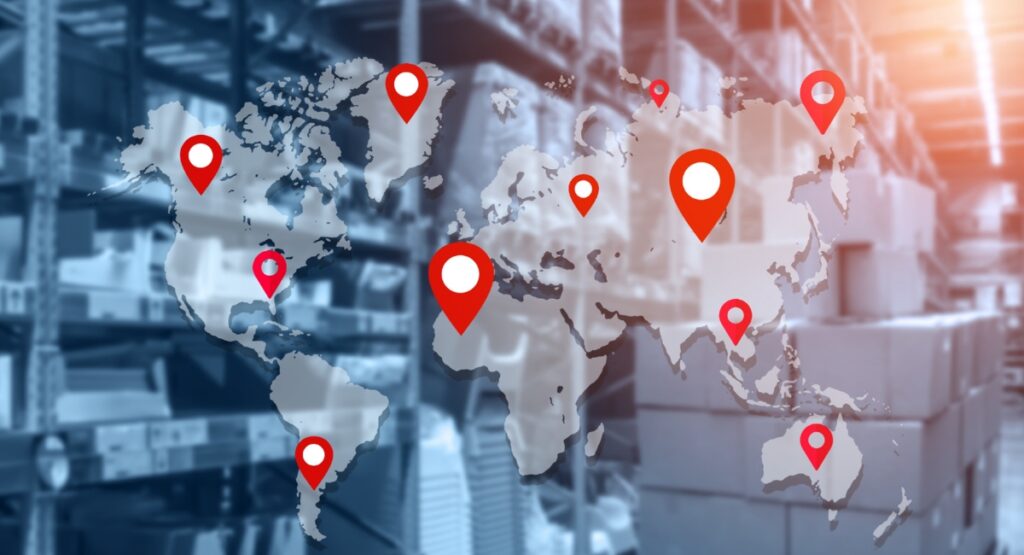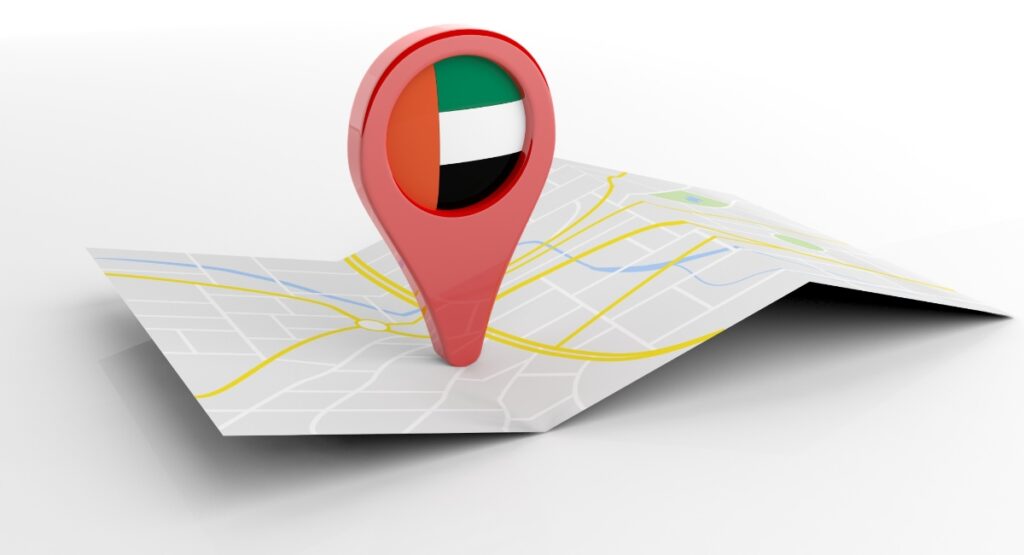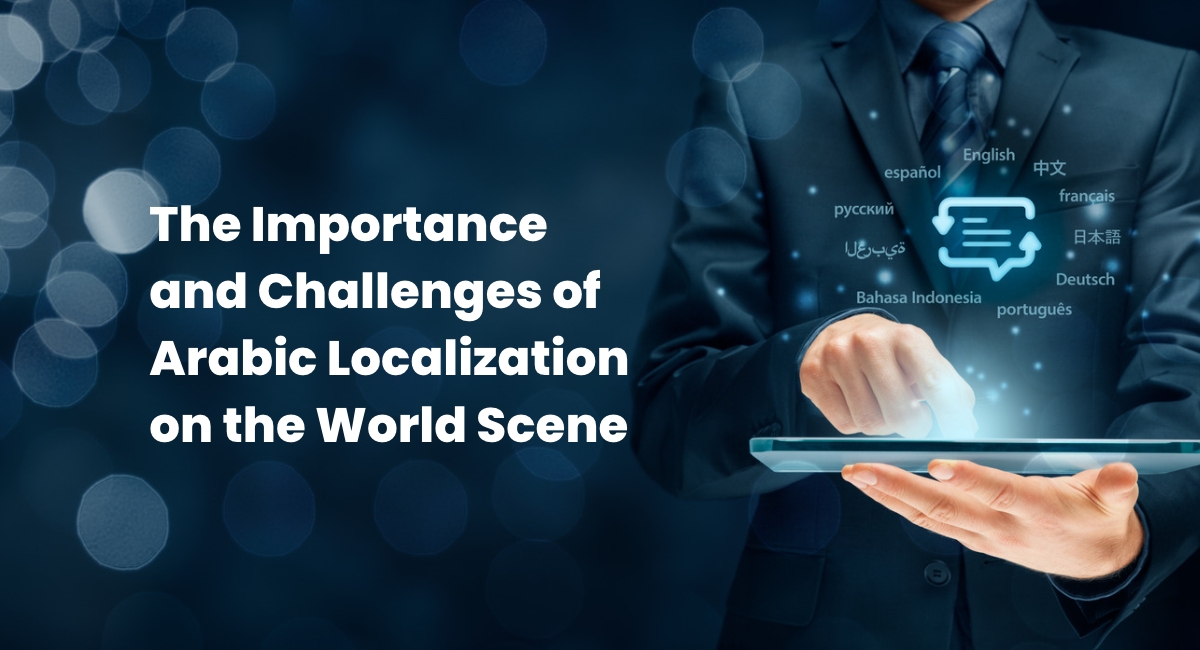Localization is a valuable business strategy in today’s connected world. It is a process that involves adapting content in such a way that it fits the target audience. But the localization process is more than just a literal translation of words from one language into another.
The process of localizing content is done by a translator specializing in the target audience’s language and culture. The translator may also specialize in a specific industry. Their job is to ensure that the content meets the expectations and conventions of the local market.
A translator checks images, date and time formats, currency, payment methods, customer care, and more. Every element must be localized to ensure it reaches the target audience and meets their needs and preferences.
The localization process is essential in our modern business world. With localization, organizations are able to reach new markets and new audiences. It’s vital to create deep relationships with customers around the world while gaining an advantage over competitors.
In this article, we’ll discuss the importance of the localization industry, along with Arabic localization and its growing importance for global businesses.
Table of Contents
Localization Industry Overview

The localization industry includes companies that offer translation and localization services for businesses. The translation companies work with businesses that want to get their products and services into new global markets. But translation agencies do more than translate; they also ensure their clients’ content meets the needs of the local culture, language, business, and political requirements.
Agencies within the localization industry work with companies and organizations around the world. They work with a wide range of languages, including Arabic.
The Arabic-speaking market is being sought after by global businesses and multinationals. These organizations understand the differences between their own and Arabic culture, including religion, norms, beliefs, and more. However, Arab markets are seen as increasingly valuable, making Arabic localization crucial for business outside the Arab world.
According to WorldData, Arabic is the official language of 22 countries. It is the mother tongue of 11 other countries, with 107.95 native speakers and 371.4 million people around the world who speak Arabic as their mother tongue.
Arabic is spoken in the following countries:
- United Arab Emirates
- Saudi Arabia
- Lebanon
- Iraq
- Jordan
- Egypt
- Syria
- Bahrain
- Kuwait
- And many more
Multinationals and other organizations have realized that Arab-speaking countries offer valuable marketing targets for these companies. These regions are experiencing rapid growth across a broad range of industries.
The only way businesses can reach these untapped markets is through the translation and localization of their products and services.
Exploring Arabic Localization

While Arabic localization is valuable for a company’s strategy, what does it really mean? Arabic localization means adapting company websites, products, services, and other content for Arab-speaking people across the Middle East and North Africa.
For example, consider a company that wants to create a new app for Arabic speakers. There’s a lot to consider, including that Arabic is read from right to left, unlike English, which is read left to right. This can be a considerable formatting challenge when you consider the size of a mobile phone’s screen.
The Arabic localization process starts with mirroring, a concept that states RTL (right to left) language layout must mirror the LTR (left to right) layout for the user. This also applies to images in a sequence. In the West, we view progression moving from left to right; however, Arabic speakers see progression from right to left.
Translators working on localization from one language into Arabic must also work with the language itself. Arabic is an expressive language with poetic words, idioms, and concepts that may make translation and localization more challenging.
The Purpose and Role of Arabic Localization

Arabic localization aims to ensure that an organization’s products, services, and materials are localized to fit the target market. The Arabic-speaking regions offer new opportunities for global businesses that want to reach new markets. They’re finding it necessary to localize everything from company websites and marketing campaigns to social media posts, product descriptions, and much more.
All parts of content intended for Arabic speakers (as in other languages) needs to be localized. The localization process is applied to images, text, and other elements. The goal is to help content reach Arabic speakers in their native language, ensuring that all elements in the content meet the target audience’s preferences and norms.
Content properly translated and localized for Arab speakers offers many benefits for those in the target audience. Of course, organizations benefit from localization, too, but the emphasis is on the user’s experience.
Users feel the company cares for them because all content touches their cultural norms, preferences, and more. The localization process enhances the user’s experience with the content and products. In return, those in the target audience feel more comfortable with the business. They also see the organization as more reputable and trustworthy. The result is that these customers are also more likely to buy from the company in the future.
Arabization vs. Localization: What’s the Difference?

It can be challenging to understand the difference between localization and Arabization. So, we’ll offer a short explanation of the differences here.
Localization is the process of adapting content, products, and services to a target country’s language and culture. This is a broad term for the process; however, Arabization is a more focused localization approach.
Arabization is localizing content, products, and services specifically to Arab speakers and their regions. This process considers the religions, beliefs, practices, and more in different Arab countries.
Organizations looking to go through the Arabization process can experience many benefits, including the following:
Their products and services will appeal to Arabic audiences.
- Arab speakers can more readily accept and embrace products and services localized for their specific region.
- Increased market penetration; customers feel they can trust the company and its products, and the organization is seen as more credible and caring.
- Arabization also increases the chances of a company becoming known to Arabic speakers.
- The process also opens up language and cultural barriers for a freer exchange of ideas.
These are only a few benefits for Arab speakers and businesses that use Arabization to reach these new markets.
Navigating Challenges in Arabic Localization
Businesses and translators do face specific challenges with Arabic localization. We’ll review several of those issues here.
1. Numerous Dialects
The Arabic language has numerous dialects that can be challenging for translation and localization projects. There are about 25 dialects of Arabic spoken worldwide, with Modern Standard Arabic (MSA) being the most commonly spoken dialect, which includes the following:
- Egyptian
- Maghrebi
- Gulf
- Levantine
2. Language Complexity
The Arabic language is one of the most complex in the world. This beautiful language can make it challenging for translators to find the right terminology.
In addition, Arabic does not use capital letters, which are common in most Western languages. The language also includes sounds not found in English or other languages.
3. Difficult Formatting
Arabic is an RTL (right to left) language, which means it’s written and read right to left. Translating the text from an LTR (left to right) language can make formatting content challenging for books and other materials.
The Arabic calendar also differs from the Gregorian calendar used by many Western countries. When translating dates into Arabic, translators must ensure the dates coincide and which calendar should be used.
These are only a few formatting challenges Arabic localization agencies face.
4. Arabic is a Poetic & Figurative Language
Another challenge for translators is that the Arabic language is poetic and figurative. Arab uses specialized proverbs and figures of speech, along with similes and metaphors. These elements can make it challenging to translate from one language into Arabic. Word-for-word translations are not possible.
In addition, Arabic speakers use long sentences, making translation complex and difficult.
The best solution for these and other Arabic localization and translation projects is to hire a professional translator. The individual must have knowledge and experience with the target audience, as well as an integral knowledge of the Arabic language.
Key Localizers in Arabic Language Services

If your business wants to reach out to the Arabic market, it’s essential to find the best Arabic localization services available.
Pollion
Pollion is first on our list of key localizers in Arabic language services. This agency provides content and marketing services to international brands across various industries. They offer guidance and support through creative solutions for multilingual content, business advice, and more.
The agency works with professional translators who work with the following languages:
- Turkish
- Arabic
- Persian/Farsi
- Kurdish
- Urdu
- Pashto
- Azerbaijani/Azeri
- Dari
The company seeks to be the foremost company for providing language and localization services for Middle Eastern Markets. To this end, Pollion uses cutting-edge technology, such as SmartCat and Plunet, along with their expert translators to get the job done right every time.
How to Choose a Reliable Localization Provider?
When choosing a reliable Arabic localization provider, what should you look for? We’ve created a list of tips to help you find the best localization provider.
Tip 1: Language & Industry Requirements
The first tip on our list is to consider your language requirements. How many languages do you need (and which languages), and what other services you may need, such as Arabic localization.
Look for localization service providers that offer the language(s) your project needs and whether they can provide translation and localization services for your industry.
Tip 2: Qualified Human Translators
Many translation companies use a variety of machine translation methods in their work. However, humans are still needed when it comes to the localization process.
So, it’s best to search for an Arabic localization service provider that works with a network of vetted human translators. The translators need to have expert knowledge and experience with the culture, and the human translators should be native speakers of the target language.
Tip 3. Quality Work
One of the main areas of concern is finding a localization agency that offers top-quality work. Poor localized content results in lost business, insulted customers, and more.
So, when searching for the right localization agency, ask these questions:
- Do you have a quality assurance process?
- What does your quality assurance process look like?
- What technologies do you use to ensure quality and consistency?
The right localization service provider will have the right answers and be able to back these up with evidence of their work’s quality.
Tip 4. Transparent Pricing
Some businesses believe that the lowest price ensures they can meet their budgets and that the translation will be good enough. But that’s not how translation and localization work. It’s best to focus on the quality of the work and ask about an agency’s pricing.
Issues to avoid include overpricing their work, hidden fees, and other problems. Here are some ways to determine the pricing a particular agency offers:
- Choose a translation agency that offers reasonable pricing and offers high-quality results.
- Consider agencies using strategies that decrease prices, including glossaries, translation memories, and machine learning.
- Get several quotes from different agencies and compare the pricing. Look to see what each agency offers and choose the Arabic localization service provider that offers the right price and offers the services you need.
- Ask each agency for references from past clients. A reputable localization agency will provide this information quickly. They should include past clients’ names and contact information, which you can contact. Ask them about their experience with the particular agency.
5. Additional Services
Finally, ask what additional services each translation offers. Choose the translation agency that offers the additional services your project may need. For instance, some agencies may offer the following services:
- Graphics & layout design
- Voice over translations
- Subtitle translation
- SEO in each language
- And more
Using these tips, you’ll find the right translation and localization agency for your project!
Conclusion
Today, Arabic localization is essential in our globalized markets and lives. Consider the Arabic target audience if your business is searching for new markets. With over 371 million speakers, there’s a broad market to tap. Arabic speakers are searching for content and products aimed at their language and culture, making this a valuable prospective market for your business.
With the right combination of a fantastic product and Arabic localization, your business could find major success with Arabic speakers around the globe!
